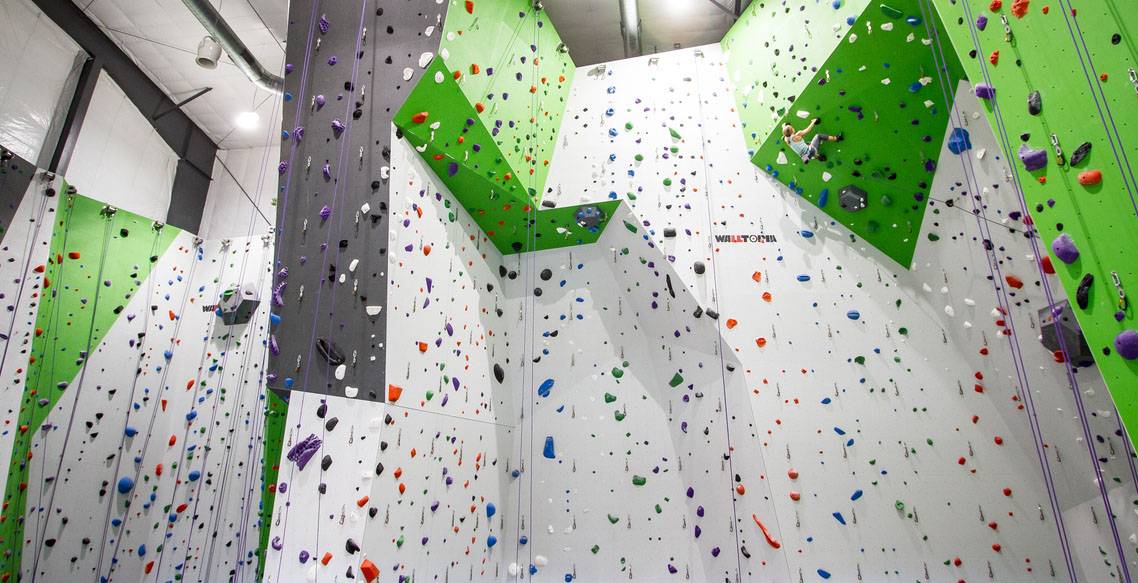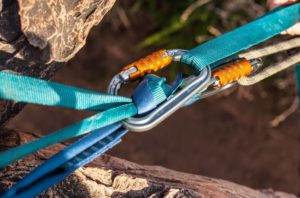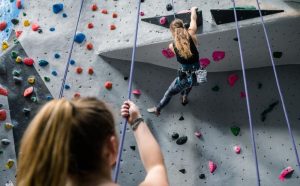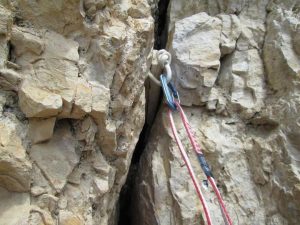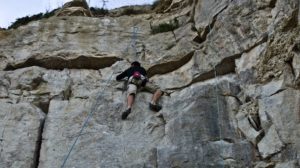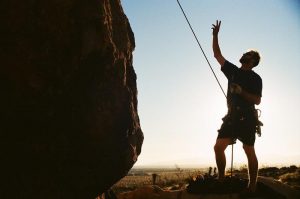The safest, easiest way to learn how to climb for both adults and children is to sign up for a short and inexpensive rock climbing lesson at an indoor rock climbing gym
An introductory indoor rock climbing class enables both adults and children to learn how to rock climb inside safely and quickly. Modern climbing equipment, standardized safety techniques, and a controlled indoor climbing environment serve to counter the major dangers of rock climbing. Following a lesson, a participant should be able to pass any indoor climbing gym’s standard safety test. Participants can then move on to the fun part: rock climbing.
Climbing Safety in an Indoor Environment
People often have reservations about trying rock climbing due to safety concerns, but climbing indoor walls is probably safer than riding in a car to the indoor climbing gym. Modern climbing equipment is overdesigned to the point of virtually never failing, except in cases of human error. Modern climbing gyms are constructed and managed with safety in mind, and they take this charge seriously since their insurance companies demand it.
Climbers cannot be certified to use the climbing equipment at an indoor facility without first demonstrating their climbing safety skills in a standard test. An introductory climbing lesson endeavors to teach these skills to first-time climbers. Following the lesson, the beginner rock climber should optimally be able to pass the standard safety test at any indoor climbing facility.
A Typical Beginner Climbing Lesson
Introductory rock climbing classes aim to quickly and effectively educate first-timers about the basic safety techniques required for indoor wall climbing, generally for a moderate fee ($20-50). This price usually includes a standard rock climbing equipment rental package made up of climbing shoes, a harness, a belay device, a locking carabiner, and a chalk bag.
Within a few short hours — the lesson’s length depends on the gym — participants learn how to safely climb and belay using ropes in an indoor environment. By the end of the introductory climbing lesson, participants will understand how to put on a climbing harness properly, how to tie in with a rewoven figure-8 knot to the proper place on their harness, and how to belay another person safely.
What Happens When a Climber Falls?
During the lesson, most participants will probably experience their first fall, or at the very least, their first hang on the rope. When safety techniques are properly followed, falling while climbing indoors results in the climber simply hanging in the safety harness, secured by the rope and the belayer. Experiencing this during the lesson increases participants’ trust in the equipment, the belayer, and the safety techniques being learned.
Climbing After the Lesson
Most gyms allow introductory students to climb for the rest of the day for no additional fee after the lesson is completed and they have passed their safety test. This allows students to spend more time honing their safety skills while they also start to experience the myriad benefits of rock climbing.
Finding a Gym and Signing Up
Locating an indoor climbing gym has never been easier. Indoor Rock Climbing provides a comprehensive listing of gyms worldwide. Most major urban areas in the U.S., along with many smaller towns and colleges, have at least one indoor rock climbing facility. Many gyms now offer introductory walk-in courses on a weekly basis. Most climbing gyms are eager to increase their membership and will welcome the opportunity to teach a newcomer rock climbing.

